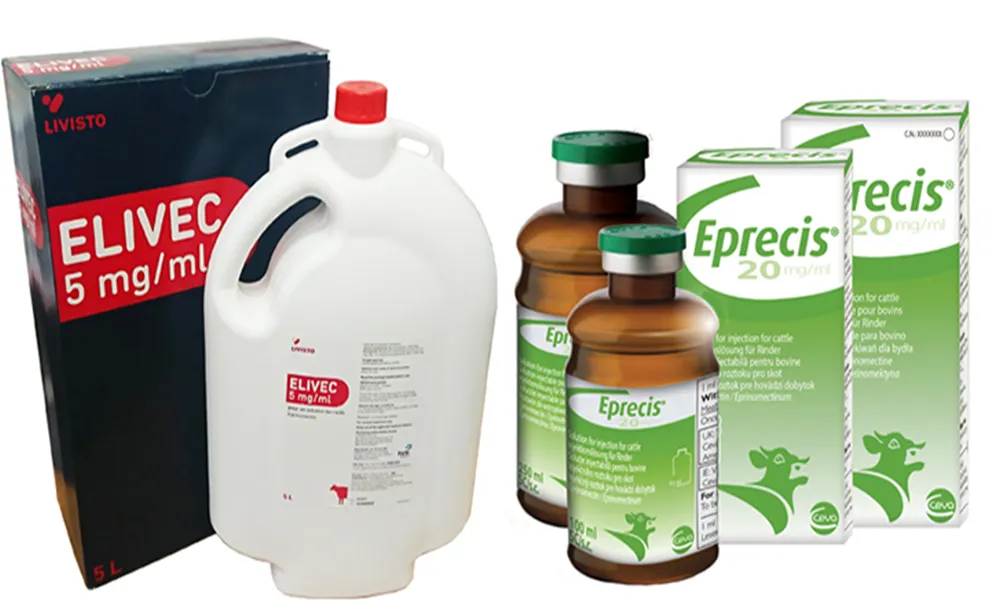
Internal parasites and farm revenue
Internal parasites are a major source of revenue loss on Irish beef and dairy farms. While the likes of liver fluke, stomach worms and lungworm rarely prove fatal in cattle, they do have a detrimental impact on overall animal health and ability to maintain a healthy body condition score. Moreover, dairy cattle suffering from internal parasites are likely to see a sharp reduction in milk yield. Therefore, it is imperative that all farmers test animals for parasites and, where necessary, deliver the correct treatment.
The threat of stomach worms should not be overlooked
Over the coming weeks, we will be running a series of blogs looking at the risk of the three main parasites: namely fluke, gastrointestinal worms and lungworm. For today, though, we will focus specifically on the gastro or stomach worm. Because it poses no real mortality risk, it is easy to overlook the damage that this nasty and resilient parasite can do to our livestock and, by extension, our revenue prospects. At any rate, it is true that worms are not much more than an irritant to adult cattle. However, we should not forget that they can be quite dangerous for younger animals, with calves being particularly vulnerable to severe illness following infection.
Stomach worm larvae tend to thrive on grass during mild humid conditions, and are most prolific during the spring and autumn. This year, we had a particularly mild October and November and, while the cold snap has now well and truly kicked in, this should not be taken to mean that the threat of worms is non-existent. In fact, if you were grazing cattle on autumn grass until a few weeks ago, there is a very high likelihood that they picked up stomach worms. The only way that you can be sure, though, is to have dung samples tested. If tests reveal a high worm count, you will need to treat your animals as soon as possible.
Treating Stomach Worms
The key to treating stomach worms is to ensure that worms at all stages of the life cycle are killed. If the larvae are not killed alongside the adult worms, they may lie dormant for the winter before re-emerging when the weather gets milder. Drenches containing products like macrocyclic lactone and benzimidazole are most effective at treating stomach worms in cattle. The products outlined below are probably your best option if you discover that your herd is dealing with the parasite.
Elivec
Elivec is a ready to use pour-on solution for treating and controlling gastro-intestinal worms. It is also effective for controlling lungworms, warbles, sucking and biting lice, chorioptic and sarcoptic mange mites in both beef and dairy cattle. Like the other products on this list, it comes with no withdrawal for milk, and a very short withdrawal period of 15 days for beef. This makes it a popular choice for factory calves as well as dairy animals. It is easy to use and has high success rates. The active ingredient in Elivec is eprinomectin.
Eprecis
Eprecis is the only injection treatment on our list. Many farmers prefer injections to pour-ons because they are – arguably – the most reliable way to maximise the impact of the active ingredient. The Herd pack, which we sell here at Agridirect, contains two 250ml bottles, one 100ml bottle, and a free injector. Farmers should note, however, that the withdrawal period for beef and offal is 63 days. This may mean that Eprecis is not the best choice for factory animals.
Zeromectin
Zeromectin is an oil-based pour-on used for the treatment and control of gastro-intestinal worms (including inhibited Ostrtagia ostertagia and Cooperia spp.), lungworms, warbles, sucking and biting lice, chorioptic and sarcoptic mange mites in beef and dairy cattle. While it has a zero days withdrawal period for milk, it has a 28 days withdrawal for beef. Zeromectin boasts very rapid absorption rates.
Eprizero
Eprizero comes as a ready to use pour-on solution that will treat gastrointestinal roundworms, lungworms, warbles, mange mites and lice. Studies have shown that cattle treated with Eprizero increased their milk yield by up to 2 litres per animal per day. It boasts no withdrawal time for dairy cattle and an impressive 10-day withdrawal period for beef. This makes it a great choice for treating factory animals as well as dairy cows.
Eprinex
Another very popular pour-on, Eprinex will treat and control all kinds of endoparasitic worms. It boasts sustained activity, and claims to kill more species of worms than rival pour-ons. Eprinex has a 28-day withdrawal time for beef, and no withdrawal time for milk.











